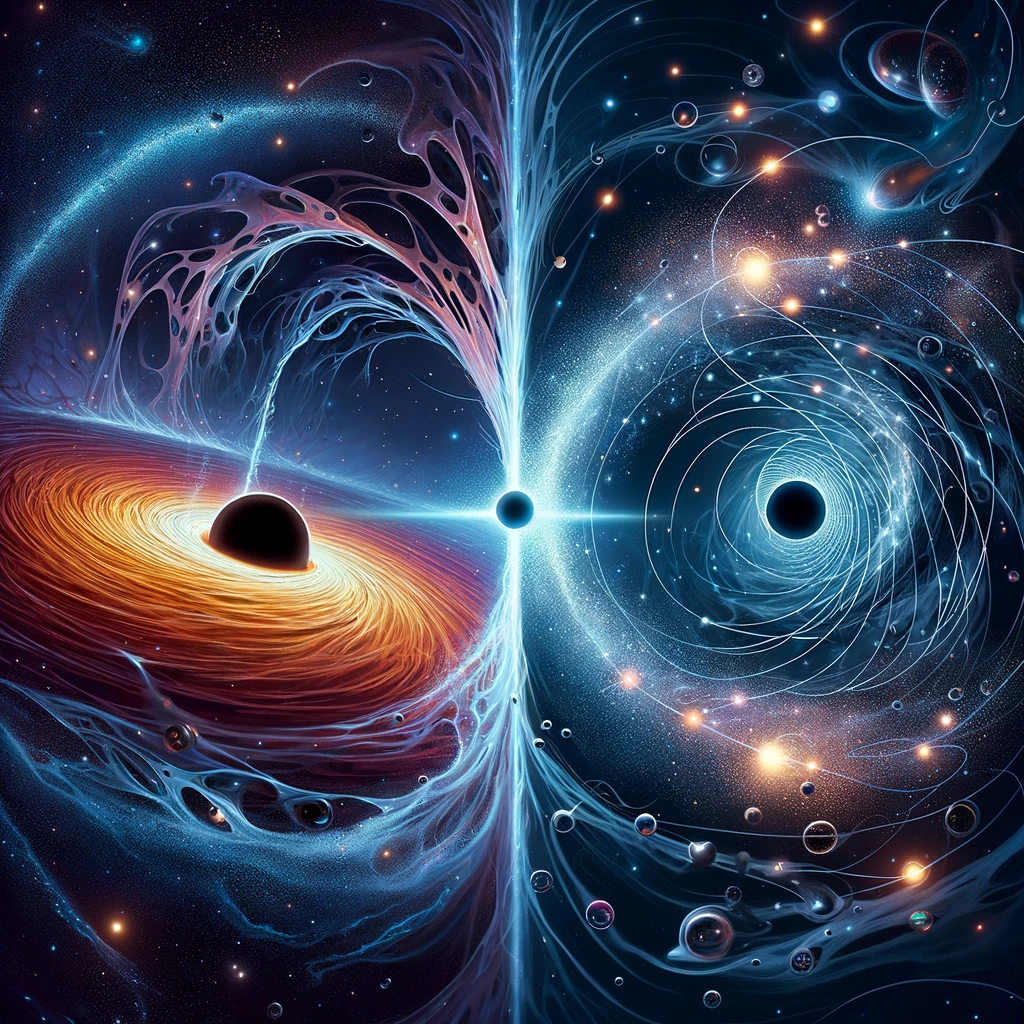Are Wormholes and Quantum Entanglement Connected?
The realm of theoretical physics contains a treasure trove of mind-boggling ideas and concepts that challenge our fundamental understanding of the universe. Here we explore the ER = EPR conjecture.

The realm of theoretical physics contains a treasure trove of mind-boggling ideas and concepts that challenge our fundamental understanding of the universe. One such intriguing idea is the ER = EPR conjecture, which suggests a deep connection between two seemingly disparate concepts in physics: Einstein-Rosen bridges (ER), also known as wormholes, and quantum entanglement between two particles (EPR). This conjecture has captured the imagination of physicists worldwide and promises to shed light on the deepest mysteries of space and time. In this blog post, I am going to nerd-out a bit and dive into the fascinating world of ER = EPR, exploring its origins, implications, and the ongoing quest to prove or disprove it.
Einstein-Rosen (ER) bridges, also known as wormholes, are hypothetical shortcuts through spacetime that could allow for faster-than-light travel. They were first introduced by Albert Einstein and Nathan Rosen in 1935. EPR, on the other hand, refers to a thought experiment proposed by Albert Einstein, Boris Podolsky, and Nathan Rosen in 1935, which considered two entangled particles that are separated by a large distance. According to quantum mechanics, the state of each particle is correlated with the state of the other particle, even though they are far apart. This correlation, known as entanglement, challenges the idea of local realism, which states that the properties of a particle should be determined by its local environment. It is postulated that black holes in space could function as wormholes and connect two far away places in space. Can quantum entanglement between large objects such as black holes exist? If so, can the path or hole be traversed? These questions remain up for debate.
The Birth of the Conjecture
"ER = EPR" was first proposed by Juan Maldacena and Leonard Susskind in 2013. They suggested that the entanglement between two particles is equivalent to the connection between two points in spacetime through a wormhole. In other words, quantum entanglement could be interpreted as a bridge through spacetime (which Einstein famously called, "spooky action at a distance"). This idea has since been developed further and is an active area of research in both physics and mathematics. To give some background, Maldacena is known for his groundbreaking work in string theory, while Susskind is famous for his contributions to the development of string theory and the concept of black hole complementarity.
At its core, the conjecture suggests that there exists a hidden connection between two phenomena: wormholes (ER) and entangled particles (EPR). Wormholes are hypothetical tunnels through spacetime that could potentially provide shortcuts across the universe. Entanglement, on the other hand, is a quantum phenomenon where particles become connected in such a way that determining the state or spin of one particle instantaneously determines the state or spin of the other, regardless of the distance separating them. This is sometimes thought of as a "collapse" of a superposition state, in which both particles are in multiple states at once.
Ironically, despite Einstein and Rosen contributing to both of their famous papers in which they proposed their work now known as ER and EPR, they did not identify the substantial connections between these two publications. I have cited both articles at the bottom of this page in case you are interested in reading their work further.
The Implications of ER = EPR
One of the most profound implications of the ER = EPR conjecture is its potential to resolve the long-standing paradoxes associated with black holes. According to the conjecture, entangled particles might be connected through a wormhole, creating a bridge between regions of spacetime. Black holes have puzzled physicists for decades due to the apparent violation of quantum mechanics, specifically the conservation of information. ER = EPR offers a glimmer of hope in resolving this paradox by suggesting that information is preserved through such entanglements and not actually lost at all through Hawking Radiation (black body radiation).
Ongoing Research and Challenges
While the ER = EPR conjecture has generated much excitement in the physics community, it remains a conjecture, not yet a proven theory. Researchers are actively exploring ways to test and validate this hypothesis through mathematical models and experiments.
One of the major challenges in confirming ER = EPR is the extreme conditions associated with black holes and the elusive, theoretical nature of wormholes. These phenomena exist in regions of spacetime with immense gravitational forces and quantum effects, making them profoundly difficult to study directly (we can't simulate such extreme events easily on Earth).
Conclusion
It's important to note that the "ER = EPR" conjecture is still a subject of ongoing research and debate in the physics community, and there is not yet a definitive answer as to whether or not the connection is true. However, the idea has sparked a lot of interesting and exciting developments in our understanding of the nature of spacetime and quantum mechanics.
The ER = EPR conjecture represents a fascinating intersection of quantum mechanics, general relativity, and the mysteries of the cosmos. It offers the tantalizing prospect of resolving some of the most perplexing questions in modern physics, from the nature of black holes to the fundamental structure of spacetime and physical matter. While the conjecture is far from proven, it serves as a reminder of just how little we know, and how much more there is to explore. As research in this area evolves, we may one day uncover the deep connections between ER and EPR, and unravel the secrets of the universe.
References
- Einstein, A. and Rosen, N., The Particle Problem in the General Theory of Relativity, Physical Review, Vol 48, pg. 73-77, July 1935, American Physical Society, DOI = 10.1103/PhysRev.48.73, https://link.aps.org/doi/10.1103/PhysRev.48.73
- Einstein, Albert Podolsky, B Rosen, N Can Quantum-Mechanical Description of physical reality be considered complete? Phys. Rev., Vol 47, pg. 777-780, 1935, Institute for Advanced Study, Princeton, New Jersey, https://cds.cern.ch/record/405662/files/PhysRev.47.777.pdf?version=1
Written with the assistance of GPT-4.

